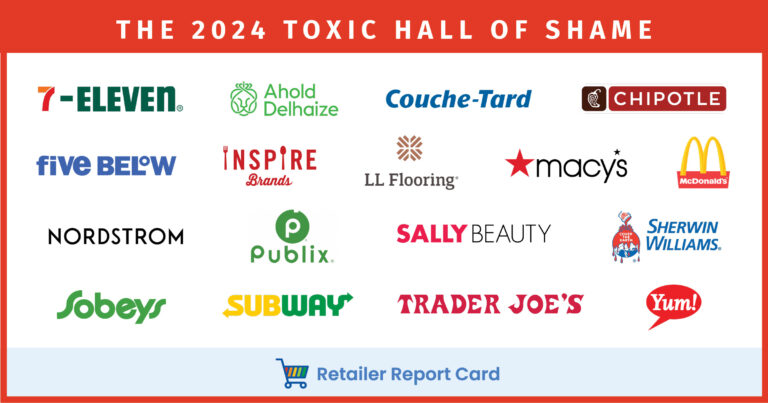Hexane
When the Toxic Substances Control Act (TSCA) was enacted in 1976, it was intended to ensure that chemicals are safe throughout their lifecycle, from manufacture to use and disposal. But weaknesses in the law left the Environmental Protection Agency (EPA) unable to act on known health dangers.
Other laws, such as those setting air, water, and workplace safety standards, do not adequately regulate exposure to most chemicals, nor do they address the hazards a chemical may pose over its entire lifecycle. EPA action is needed to rapidly reduce exposure to toxic chemicals, such as hexane, used primarily for industrial purposes but also found in common household products—including stain removers, spray adhesives and craft paints. Hexane* is easily inhaled and can cause long-lasting, even permanent, nerve damage.
We urge the EPA to use its authority under an updated TSCA to protect people and the environment from toxic chemicals like hexane.
Federal agency actions to regulate hexane don’t go far enough
Hexane is a solvent widely used as an industrial cleaner and degreaser and is an ingredient in many consumer products. Easily inhaled or absorbed through the skin, hexane has been recognized for more than 40 years to cause long-lasting and even permanent nerve damage in feet, legs, hands, and arms. Existing regulations do not address consumer use and are not protective enough for workplace exposures. Only TSCA can address the full life cycle of this chemical from production to use to disposal. An unknown number of consumers purchase and use hexane-containing products without being aware of the health risks. The time has come to expand public protection from hexane and other harmful chemicals.
Safer, effective substitutes to hexane are available now
Water-based cleaners can replace hexane and other toxic solvents in the auto repair industry and other industries where precision cleaning is required. Water-based adhesives are also safer substitutes for hexane in many consumer products. In the printing industry, vegetable and plant-based cleaners can be used instead of hexane. Despite the market’s response to demand for safer solvents, consumer and worker protection should not be left to the private sector. Unfortunately, despite the well-known, severe nerve damage caused by hexane and the ready availability of cost-effective, safer alternatives, this toxic substance is still found in everyday consumer products and is widely used in industry as a solvent, exposing Americans to unnecessary health risks.
Industries where hexane is found
Several hundred million pounds of hexane are produced in the United States each year in the form of solvents. It is used as a cleaning agent in printing, shoe making, textiles, automotive brake repair, and furniture making. It is also used in the food industry.
Products where hexane is found
 Common household products, such as spray adhesives, contact cement, arts and craft paints, and stain removers contain hexane. The U.S. Department of Health and Human Services (HHS) Household Products Database lists 54 consumer products that contain hexane. Half of these products also contain solvents that increase the severity of hexane nerve damage. Although the majority of hexane-containing products found on this list are used in the home, specifically for home maintenance, arts and crafts, and automotive products also contain it.
Common household products, such as spray adhesives, contact cement, arts and craft paints, and stain removers contain hexane. The U.S. Department of Health and Human Services (HHS) Household Products Database lists 54 consumer products that contain hexane. Half of these products also contain solvents that increase the severity of hexane nerve damage. Although the majority of hexane-containing products found on this list are used in the home, specifically for home maintenance, arts and crafts, and automotive products also contain it.
Exposure and health risks
Hexane evaporates easily, so breathing contaminated air during the manufacture and use of the chemical is the most common form of exposure. People living near workplaces where hexane is manufactured or used, or near hazardous waste sites containing hexane, can be exposed when the solvent is released into the surrounding air. And anyone can be exposed when using the many household products that contain hexane. Workers using products that contain hexane without appropriate ventilation and protective equipment can be exposed to levels that cause nerve damage.
Short-term exposures affect the central nervous system (brain) and can cause headaches, dizziness, confusion, nausea, clumsiness, drowsiness, and other effects similar to intoxication. If exposures are high and occur frequently over months or years, effects on the brain can be long-lasting and possibly permanent. High levels of exposure have been associated with a medical condition called peripheral neuropathy—symptoms include numbness and tingling in the feet and legs, and then in the hands. There also may be reduced ability to sense touch, pain, vibration, and temperature. Muscles may become weak. In severe cases, muscles may shrink or waste away and there may be paralysis. When combined with other solvents, such as acetone or methyl-ethyl ketone, hexane-related nerve damage is increased.
How hexane is designated and regulated now
Congress specifically identified hexane as a hazardous air pollutant under the Clean Air Act and it is regulated as such by the EPA.
Some limited steps have been taken to address exposures to hexane, including controls on outdoor air emissions, (weak) limits on workplace exposures, and some disclosure requirements for environmental releases.
The California Air Resources Board designates hexane as a toxic air contaminant.
The California EPA and the U.S. EPA have established similar “safe” levels of exposure for hexane inhalation, based on chronic health impacts.
The California Department of Public Health published a health hazard advisory to warn of hexane nerve damage among California automotive repair workers. The department also published guidelines or physicians on the diagnosis and management of hexane-related peripheral neuropathy. However, since that agency has no regulatory authority, no additional action can be taken.
Take Action


Citations:
- Specifically referring to n-hexane. CAS Registry Number 110-54-3.
References:
- Agency for Toxic Substances and Disease Registry. Toxicological Profile for n-Hexane. U.S. Department of Health and Human Services. Public Health Service. July 1999. Available at: www.atsdr.cdc.gov/toxprofiles/tp113.pdf.
- Hazard Evaluation System and Information Service. California Department of Public Health. n-Hexane use in vehicle repair (June 2001).n-Hexane medical guidelines (July 2000).Available: www.cdph.ca.gov/programs/hesis/Pages/ Publications.aspx#hazard.
- The Institute for Research and Technical Assistance (IRTA), Glendale, CA. 2009. Available at: www.irta.us/reports.htm.
- Office of Environmental Health Hazard Assessment. California Environmental Protection Agency. 1999. n-Hexane chronic reference exposure level. Available: www.oehha.ca.gov/air/allrels.html.
- Scorecard. 2009. Chemical profiles by chemical. Total environmental releases in U.S. Available: www.scorecard.org
